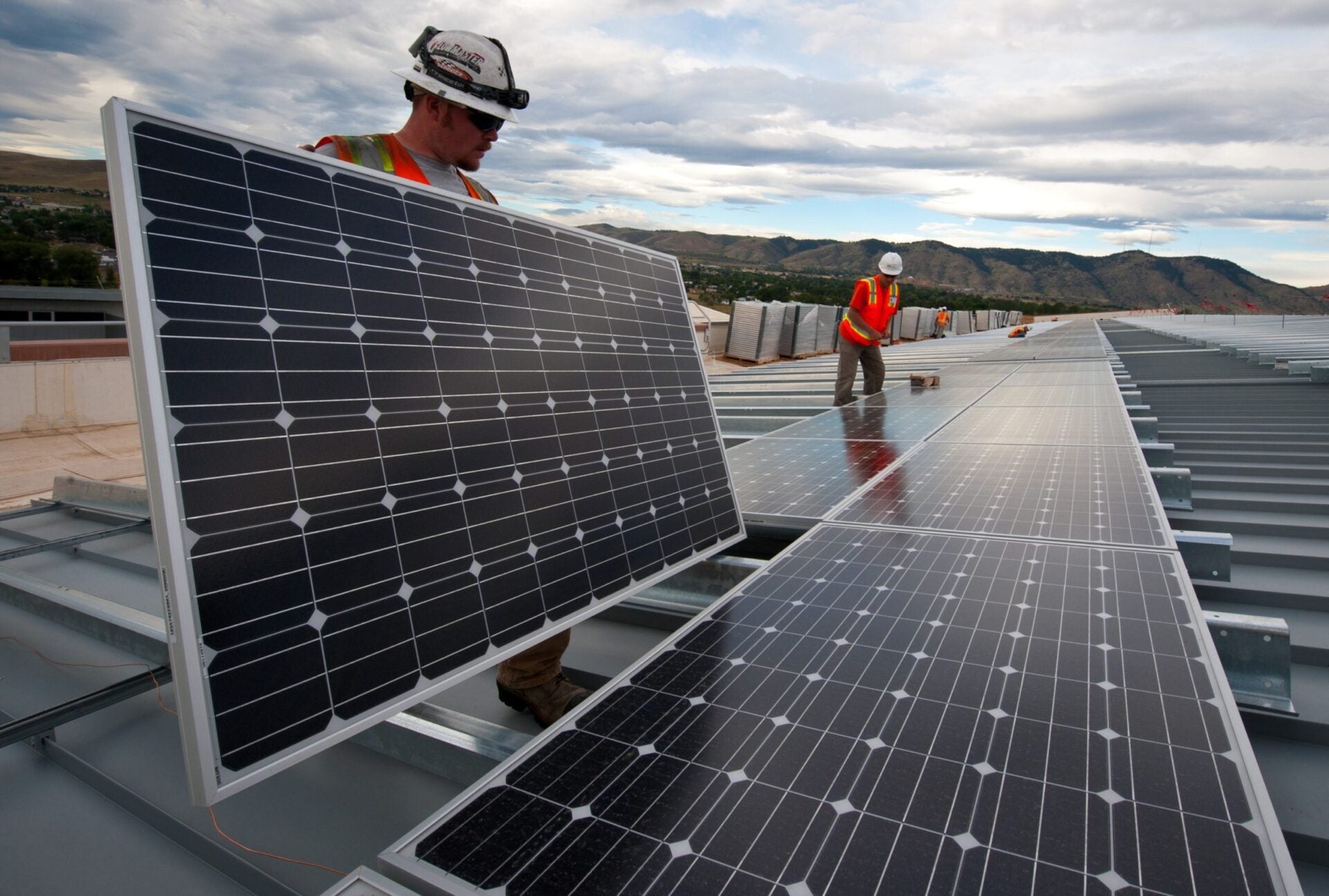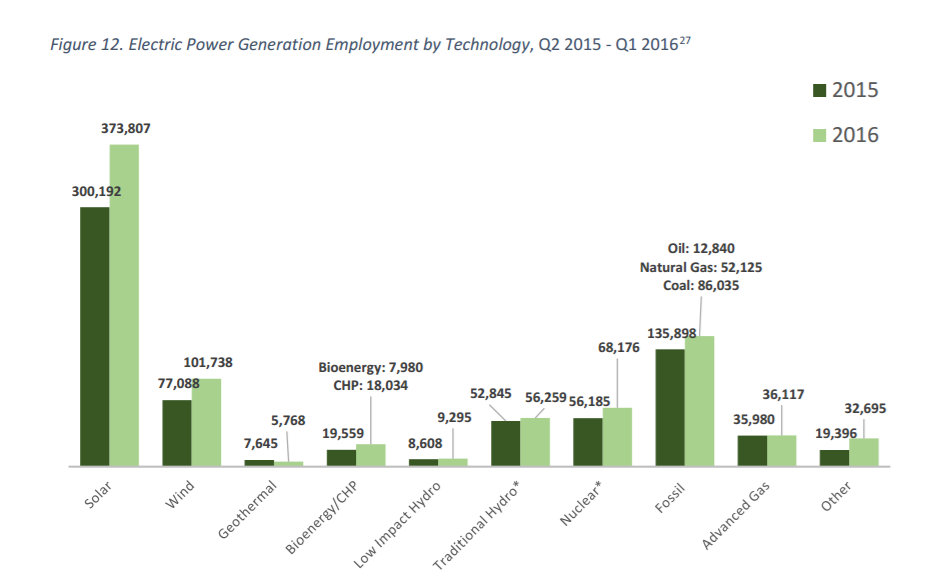
A New Era of Energy Jobs
Energy jobs are powering our homes, our businesses, and our economic growth. Data released this week from the Department of Energy shows that from 2015 to 2016, the energy sector saw employment rise about 5%, adding over 300,000 jobs and accounting for 14% of the nation’s total job growth. All while U.S. CO2 emissions fell to their lowest level in 25 years.

Throughout the past few years, the energy sector has seen a shift from traditional power sources such as coal, to new booming industries such as natural gas and renewables. But does cleaner energy have to come at the expense of American jobs? Not necessarily.
The Department of Energy report shows that the majority of the energy employment growth is attributable to the renewables sector, which saw a 25% increase in solar jobs and a 32% increase in wind jobs. Despite regulatory uncertainty, renewable energy continues to thrive as states and companies make investments to meet both government regulations and consumer demand for clean energy. Republican Governors such as, Gov. John Kasich (Ohio), Gov. Rick Snyder (Michigan) and Gov. Bruce Rauner (Illinois), have all supported renewable energy in their states, citing local job growth as a primary reason for their support.
Looking forward, there are many reasons to be optimistic about the energy jobs in 2017. The DOE report states that firms predict about 5% overall employment growth, with energy efficiency employers projected to have the highest growth rate.
The DOE report notes there is still plenty of room for improvement in the energy workforce. Both gender and racial diversity is lagging behind, with only 22-34% female employment, compared to a national average of 47%. Ethnic and racial diversity is also slightly below than the national average. And overall, the power sector is facing high rate of retirement and a lack of skilled workers to replace those entering retirement age.
In order to sustain the progress already underway, a shift is needed to address skill gaps and fill in positions that will be lost to retirement. Through job training programs, both new workers and workers shifting from declining industries such as coal, can learn the skills required to fill employment needs. By adapting to changes in the sector, energy employment can continue to develop and grow.
President-elect Trump has said that he is committed to bringing back coal jobs but those jobs may be hard to revive with the transition to natural gas and renewables already well underway. Coal mining and extraction employment hit a peak high in 2012 and has since been steadily declining, falling from just under 90,000 jobs in 2016 to 53,000 jobs in 2016. Experts agree that reversing the downward trend in coal would be next to impossible without huge subsidies for the industry.
Perhaps a better promise for the new administration is a commitment to transition workers to new natural gas and renewable jobs. While coal mining jobs may not be recoverable, there is untapped potential in energy efficiency and renewable energy jobs waiting to be developed.
Mollie Simon
Senior Communications SpecialistMollie Simon is the senior communications specialist at the Kleinman Center. She manages the center’s social media accounts, drafts newsletters and announcements, writes and publishes content for our website, and regularly posts to our blog.

